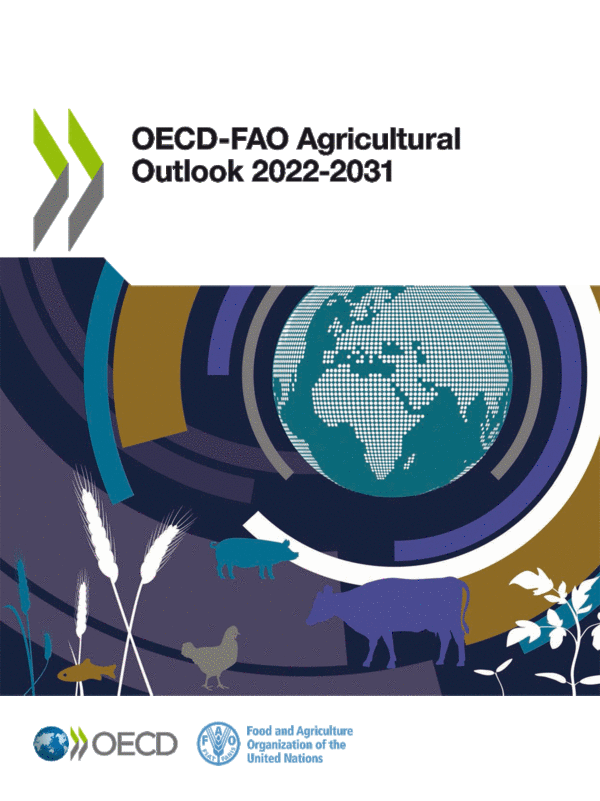 Read this article in French
Read this article in French- Share this article
- Subscribe to our newsletter
OECD-FAO Agricultural Outlook 2022-2031
The global agrifood sector faces fundamental challenges over the coming decade, particularly the need to feed an ever-increasing population in a sustainable manner, the impacts of the climate crisis and the economic consequences and disruptions to food supply linked to the war in Ukraine, according to a report released by the Food and Agriculture Organization of the United Nations (FAO) and the Organisation for Economic Co-operation and Development (OECD).
The OECD-FAO Agricultural Outlook 2022-2031 provides a consensus assessment of the ten-year prospects for agricultural commodity and fish markets at national, regional and global levels, and serves as a reference for forward-looking policy analysis and planning.
Projections suggest that, following a business-as-usual path, SDG 2 on Zero Hunger would not be achieved by 2030 and greenhouse gas (GHG) emissions from agriculture would continue to increase. To achieve the Zero Hunger target while reducing direct GHG emissions by 6 per cent, overall agricultural productivity would need to increase by 28 per cent over the next decade.
Comprehensive action to boost agricultural investment and innovation, and to enable technology transfer, is urgently required in order to put the agricultural sector on the necessary sustainable growth trajectory, the report underlines.
Additional efforts to reduce food loss and waste, and to limit excess calorie and protein intakes, would also be necessary.
This report is a collaborative effort between the OECD and the FAO, prepared with inputs from Member countries and international commodity organisations. It highlights fundamental economic and social trends driving the global agri-food sector, assuming no major changes to weather conditions or policies.
(FAO/OECD/wi)
More information:
OECD/FAO (2022), OECD-FAO Agricultural Outlook 2022-2031, OECD Publishing, Paris.
doi.org/10.1787/f1b0b29c-en





Add a comment
Be the First to Comment